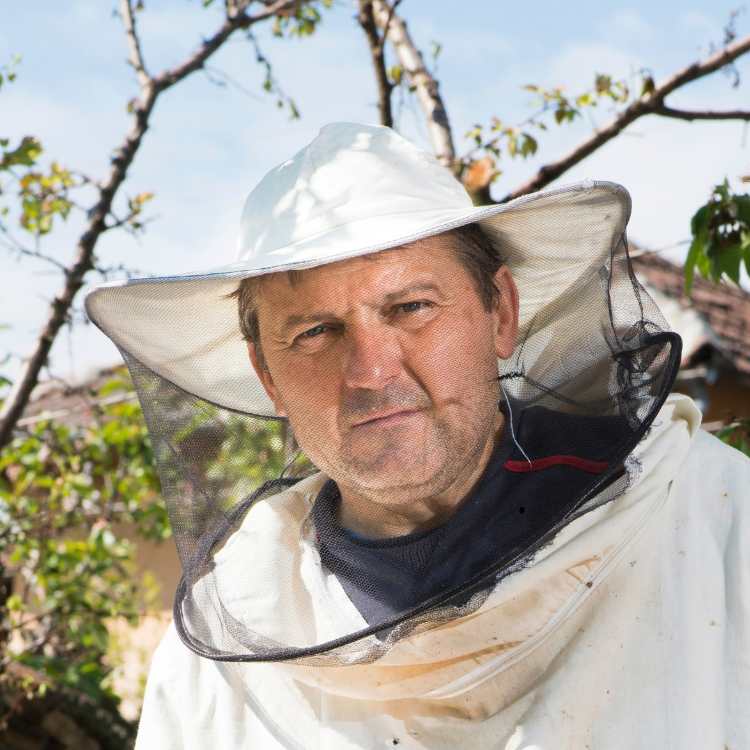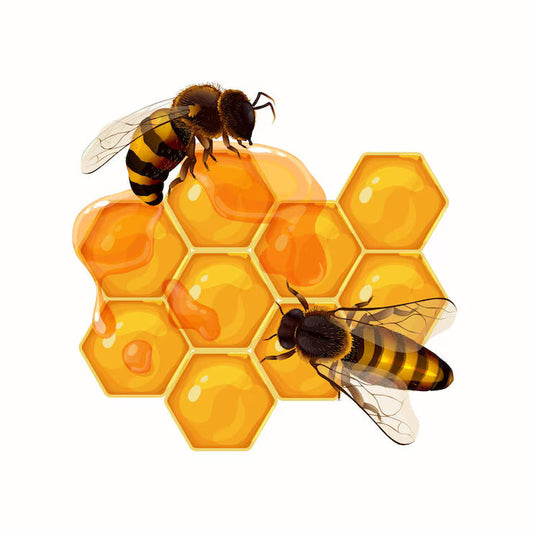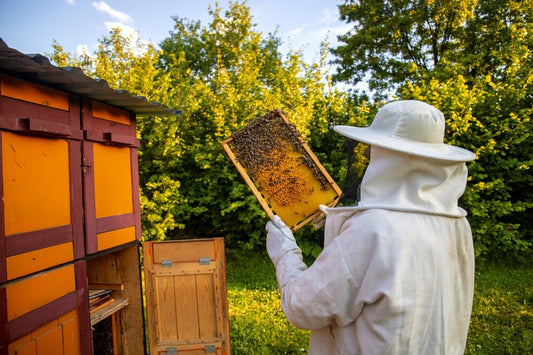Over the countless conversations about how to save the bees, especially in residential environments, one of the most overlooked hazards to bees is a common backyard feature: the swimming pool. Pools are unintentionally lethal to pollinators. Just think how many dead bees you saw in your pool last month. If you see an uptick in bee drownings in your pool, you are not alone. But there are some very real and practical steps that you can take to mitigate this issue. This guide is designed for pool owners who want to save the bees without sacrificing their summertime swim. Let’s break down the basics.
Why are bees drowning in pools?
Bees cannot survive on nectar alone. Like us, they also need water to stay hydrated. Plus, they use it to cool their hives, regulate humidity and dilute stored honey for consumption. However, the biggest challenge for bees is that they do not have a good visual sense of water; they mostly rely on scent. Chlorinated and saltwater pools emit very strong odors that bees mistake for natural sources. Once they arrive, your pool presents a deadly design flaw: no safe place for the bees to land.
Unlike birds, bees are not able to skim water or hover indefinitely and will need solid ground to drink safely. When they land on slick, featureless surfaces like pool edges or attempt to drink mid flight, many miscalculate and fall in. Without any solid grip, they struggle. Become waterlogged and drown.

A honeybee struggling in water
Identify the victims
Before you jump into implementing the first prevention strategy on the internet, it is crucial to identify the visitors. Not all yellow and black flying insects are bees. Honeybees and bumblebees are fuzzy, robust and beneficial pollinators. Wasp and hornets, on the other hand, are sleeker and much more aggressive.
In case you are consistently seeing fuzzy insects floating in your pool, you are dealing with true bees. That distinction matters because we want to save the bees, not repel all insects indiscriminately. Broad spectrum insecticides or traps can decimate beneficial species along with pests, so approach with precision.
How to save the bees?
Provide alternative water sources
This is perhaps the best and most effective way to save the bees from drowning in your pool. Redirection, not exclusion. Since bees will always seek water regardless of what you do, the least you can do is provide them with a safer, more appealing alternative.
Here’s how to do that
- Shallow water stations: Birdbaths, shallow dishes, or saucers filled with water. Add rocks, sticks or corks so bees can land safely for a drink. The key is having a non-slip surface.
- Use pool water: If bees are already attracted to the scent of your pool water, it can be a wise idea to scoop some into their new drinking stations as they will associate the familiar smell with safety.
- Consistent water sources: Bees are creatures of habit. Once they find a safe drinking spot, they will return to it regularly—often bringing others with them.
By doing this, you are not just helping individual bees. You are supporting the hive’s water supply chain. Worker bees will communicate the location of safe water to their colony. A few alternative water sources can significantly save the bees from drowning in your pool.

Poolside modifications to prevent drowning
You need to get over the fact that despite multiple alternative water sources, some bees will still explore your pools. To save the bees in those moments:
- Float bee saving devices: A simple solution is to place items that float on the surface. This can include things like cork rafts, floating sticks and more. If you care about aesthetics, there are plenty of adorable commercially available bee floats for pools. If bees fall into your pool, these give them solid ground to cling and climb out on.
- Install a pool cover: Any time the pool is not in use, a tightly fitted pool cover prevents bees from accessing the water altogether. Plus, it is also safer for the residents.
- Add escape ramps in skimmers: Bees often get pulled into skimmer baskets. Install a floating ramp or bridge inside the skinner to help the trapped bees to crawl out.
These small adjustments can go a very long way to helping you save the bees one at a time.

Bees floating in water on a bee saving device
What to do if you see a drowning bee?
It is worth noting that bees in distress are rarely aggressive. Bees can’t swim, so a drowning bee’s first priority is to survive, not sting you. That being said, do not attempt to scoop them out directly by hand. Use a cup or net instead. Bees can sting if they feel cornered, especially when wet and panicking.
After you have rescued a bee, place it somewhere warm and dry, ideally under the sun. You recover quite quickly and fly away.
A shared summer space
We need bees. There are no two ways about that. It is their relentless pollination work that keeps the entire food system alive. But with climate change, heavy pesticide use and habitat loss, their populations are dwindling. You do not need to add another hazard to this list in your backyard. It is our responsibility to mitigate even small, localized risks. Redirecting water seeking is not rocket science. It does not require extensive gear or invasive control measures. A few floating bee floaters and a basic awareness of bee behavior can mean the difference between life and death for hundreds of pollinators.
You don’t have to choose between a refreshing swim and helping pollinators thrive. The right approach helps you enjoy your summer and still actively save the bees-not just once, but every single day.
Bees are fascinating creatures. Need a sneak peak into their magical world? Read more on our full blog here.





